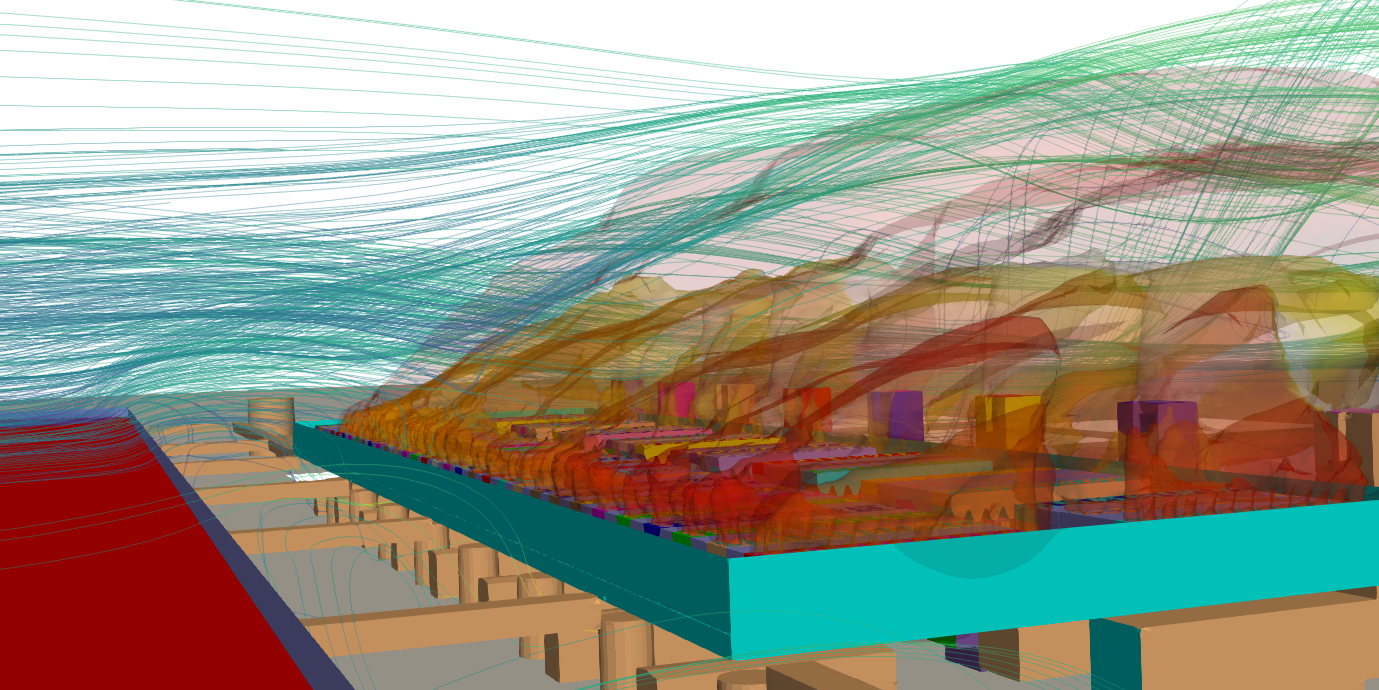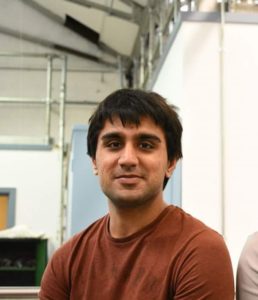
“Opening up possibilities” is the way the Arup team describes the benefits of Zenotech’s EPIC tool.
These possibilities are created through access to secure supercomputing & cloud HPC, allowing analysts to put the design of buildings through unlimited tests and scenarios to improve sustainability – both in terms of moving towards a net-zero future and increasing resilience against the harmful effects of climate change.
Committed to creating a sustainable future,, Arup’s work on modelling the external environment around data centres offers a great example of how Zenotech’s tools can build their clients’ resilience against climate change and extreme weather conditions.
Zenotech and Arup go back a long way. This leading global collective of designers, advisors and experts with over 75 years experience was an early adopter of Zenotech’s EPIC tool around 8 years ago. At the forefront of improving sustainability through imaginative, rigorous, smarter design and engineering, we caught up with their team to discuss how they are using our PyEPIC tool to improve the resilience and sustainability of high-profile data centre clients.
Resilience and sustainability in data centres
Data centres are considered vital utilities in their own right, and must be built to keep their servers cool while withstanding any impact that climate change may bring. With global temperatures continuing to rise (the earth’s global average surface temperature in 2021 tied with 2018 as the sixth warmest year on record), data centres have no choice but to be resilient to the increasingly extreme conditions. Arup’s data centre clients need assurance that their facilities can meet these challenges with in-built resilience, both now and in the future.

Modelling external environments in a huge variety of scenarios is necessary to find the optimal locations and layouts for data centres, managing the effects of humidity, wind, and high temperatures. The data centres must be able to withstand extreme weather conditions and system-wide events with managed recovery and sustained delivery of the most critical services.
With more and more big names signing up to the Climate Neutral Data Centre Pact, CFD modelling will not only assist with mitigating climate change effects but also with reducing the carbon emissions of data centres themselves. Such data-driven analysis can help reduce energy consumption by optimising airflow management and cooling in both legacy and new centres.
The power of the what if…?
The team at Arup use CFD simulations to enable probabilistic design approaches to optimising data centre design. OPENFOAM®[1], a free, open-source CFD software is used, which is powerful enough for the modelling, but combines with PyEPIC to cover the full range of possibilities – the what-ifs for their clients. Without PyEPIC, it can be a costly, time and resource-intensive process to attempt to combine all the different scenarios, which could ultimately lead to a less than optimal design solution.
The team can code workflows automated by PyEPIC which empowers them to submit large batches of jobs.
Dimple Rana, Associate and Building and Environmental Physics Engineer at Arup told us:
“The computational needs have now increased. We need to model as many scenarios as possible. Very high temperatures, wind directions and so on. Without automation, we are limited to just a handful of cases.”
Zenotech’s HPC supercomputing product, EPIC, is extremely user-friendly, and now it is even easier to integrate this tool with existing simulation workflows using PyEPIC. This automation saves users time but also improves the repeatability of processes and ensures a consistent approach to simulation.
 At Arup, Senior Engineers, Shahid Padhani and Jerrell Gill have pioneered automation using PyEPIC. Shahid said:
At Arup, Senior Engineers, Shahid Padhani and Jerrell Gill have pioneered automation using PyEPIC. Shahid said:
“With PyEPIC we can run hundreds of simulations, fits and correlations. Only one year ago we couldn’t have achieved this. The Python interface streams OpenFoam jobs seamlessly to the cloud quickly with a short turnaround. We can achieve a high level of runs in a week. We can test one design and how it would work in a variety of locations and scenarios. For instance, we can analyse multiple wind directions without having to wait an extended time for the results.”
PyEPIC is an easy-to-use Python library that can be drawn upon to interact with Zenotech’s supercomputing EPIC tool, programmatically. With a fast setup time, PyEPIC allows Arup to manage their data, submit and monitor jobs with just a few lines of code. Being pure Python, this new release runs on a variety of platforms including Windows, Linux and Mac.
Using PyEPIC increases capability, saves time and money, and ultimately will provide better design outcomes for Arup’s clients.
More than a just a tool

Zenotech does not only offer PyEPIC to help; they back this up with in-house experts ready to work with clients, tailoring the products to their needs and offering support. Jerrell noted:
“It was invaluable to have the support of the Zenotech team. We had questions around deploying custom boundary conditions, where Mike Turner (Zenotech’s cloud architect) was very helpful”.
Supercomputing for a resilient, sustainable future
PyEPIC makes it easier and faster for Arup’s team to provide the relevant insights and predictions for their clients combining the modelling data on the external environment with their engineering expertise. Access to faster, more powerful supercomputing opens the possibilities for futureproof sustainable data centres.
Find out more about EPIC >
Read more about Arup >
[1] This offering is not approved or endorsed by OpenCFD Limited, producer and distributor of the OpenFOAM software via www.openfoam.com, and owner of the OPENFOAM® and OpenCFD® trademarks.